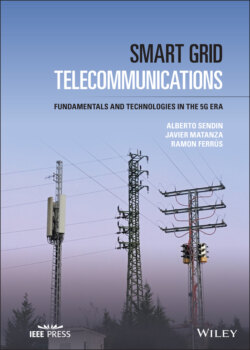Читать книгу Smart Grid Telecommunications - Ramon Ferrús - Страница 36
1.5.1.1 Customers as Smart Electricity Consumers
ОглавлениеThe customer is the entity driving the consumption patterns and electricity demands that, when aggregated across all the different types of customers (residential, industrial, etc.), define the power system load curve (see Figure 1.7).
The major concern of electric power system operators, apart from the hourly consumption prediction to manage generation sources in real time, is the general reduction of the curve peaks, and the possibility to control the load (consumption) at the moments where the system may not be prepared to cope with it.
If the consumption pattern can be influenced, the total electricity demand can be flattened, while keeping total energy consumed the same. This effect implies that the system does not need to be dimensioned to cope with the worst‐case condition of electricity demand. On the other hand, the system operator needs to have tools available to control the loads present in the network (i.e., to be capable of reducing the number of them connected or, to curtail their consumption) in a near‐real‐time manner.
The customer needs to be convinced of taking a more active role to yield part of his freedom to consume to the system operator (for a certain incentive), for the system to be optimized. To favor such involvement, customers need to be aware of the offered possibilities, and this is when they need to perceive the usefulness of their contribution and need to have easy‐to‐use access to the mechanism that enable this participation in the system. Customers will then only be convinced if they are able to easily see the result of their effort, and, if this effort is not cumbersome and facilitated by the utility through the use of processes and tools.
Figure 1.7 Sample weekly aggregated electricity demand curve. Consumption in the Spanish peninsula.
Source: Real‐time Spanish Electricity Demand [38].
DSM is the key concept to get the customer to participate in the electric power system. DSM includes all the activities performed by the utilities to “influence” the customer demand to balance instantaneous grid electricity supply with the demand. DSM groups together a set of activities including pure energy efficiency initiatives, where Demand Response (DR) is the most important one (see Chapter 5).
